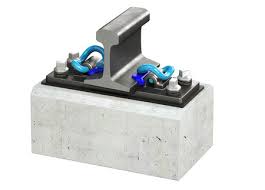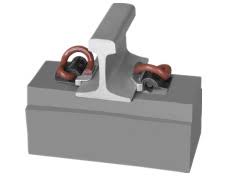Rail transportation plays a vital role in today's modern world, providing efficient and sustainable mobility solutions. However, one common challenge faced by rail operators and passengers alike is the impact of vibration and noise generated by the movement of trains. To ensure a comfortable and quiet ride, rail fastening systems have emerged as an essential component in reducing vibration and noise in railway tracks. In this blog, we will dive into the innovative role of rail fastening systems in effectively damping vibration and reducing noise levels, enhancing the overall rail experience for everyone involved.
1. Understanding Vibration Damping
Vibration in railway tracks is primarily caused by the interaction between the train wheels and the track structure. This vibration can result in discomfort to passengers, damage to infrastructure, and increased maintenance costs. Rail fastening systems play a crucial role in damping these vibrations by providing resilience and flexibility.
1.1 Elastic Elements:
One key element in rail fastening systems is the use of elastic materials, such as rubber pads or springs, which are strategically placed between the rail and the concrete sleeper. These elastic elements have the excellent ability to absorb and dampen vibrations, reducing their transmission through the track structure.
1.2 Resilient Clips:
Resilient clips are another feature found in rail fastening systems that contribute to vibration damping. These clips provide elasticity and allow controlled lateral movement of the rail within the fastening system. By allowing slight rail movement, resilient clips effectively absorb vibrations and reduce their propagation along the track.

2. Noise Reduction Strategies
Noise pollution along railway tracks can be disruptive, especially in urban areas. Rail fastening systems have been designed to minimize noise levels and improve the acoustic environment for both passengers and surrounding communities.
2.1 Rail Pads:
Rail pads, often made of rubber or synthetic materials, are placed between the rail and the concrete sleeper. These pads act as shock absorbers, reducing the impact and noise generated by the train wheels passing over irregularities in the track. Rail pads also provide an additional layer of insulation, minimizing noise transmission to the surrounding environment.
2.2 Continuous Welded Rail (CWR):
Implementing continuous welded rail is another effective strategy for reducing noise levels. By eliminating the gaps between individual rail sections, CWR reduces the impact noise produced when train wheels pass over each joint. This not only reduces noise but also minimizes maintenance requirements associated with maintaining rail joints.
3. Advancements in Rail Fastening Systems
Driven by the need for improved passenger comfort and reduced environmental impact, innovative rail fastening systems have been developed to further enhance vibration damping and noise reduction.
3.1 Floating Slab Track Systems:
Floating slab track systems incorporate a layer of high-damping material between the concrete slab and the ballast. This design isolates the track from the surrounding structure, significantly reducing vibration and noise transmission. Floating slab track systems are often utilized in high-speed rail networks or areas with sensitive receptors nearby, such as hospitals or residential areas.
3.2 Under Sleeper Pads:
Under sleeper pads are an emerging technology in rail fastening systems, providing an additional layer of vibration isolation. These pads are placed directly beneath the concrete sleeper, absorbing vibrations and preventing their propagation through the track structure. Under sleeper pads have shown promising results in reducing both vibration and noise levels in railway tracks.

Conclusion
Rail fastening systems play a crucial role in ensuring a smooth and quiet ride for rail passengers while minimizing the negative impacts of vibration and noise on infrastructure and surrounding communities. Through the incorporation of elastic elements, resilient clips, rail pads, continuous welded rail, and advanced technologies like floating slab track systems and under sleeper pads, railway networks can significantly enhance the overall rail experience. As rail transportation continues to evolve, the continuous innovation in rail fastening systems will play an instrumental role in creating a more sustainable, comfortable, and environmentally friendly future for rail travel.
Suzhou HuiBo Railway Fastener Co.,Ltd. is an expert of manufacturing track fasteners, located in Changshu, China, close to Shanghai. Our company ranks a leading position in this industry, awarded with SGS-ISO9001:2008 quality system certificate and CRCC certification, which is the highest honor of Chinese Railways.Welcome to inquiry if you need to custom rail fastening systems or order wholesale.
Email:Cecilia.Lin@hb-railway.com
HuiBo Railway Fastener
wxam.assistant@marketingforce.com

